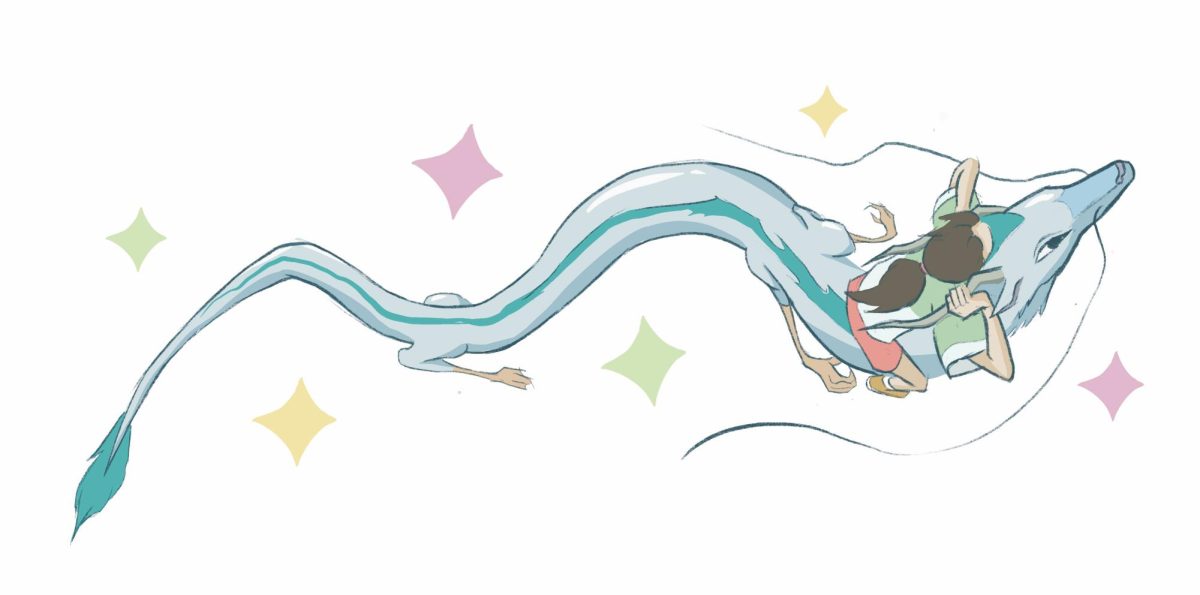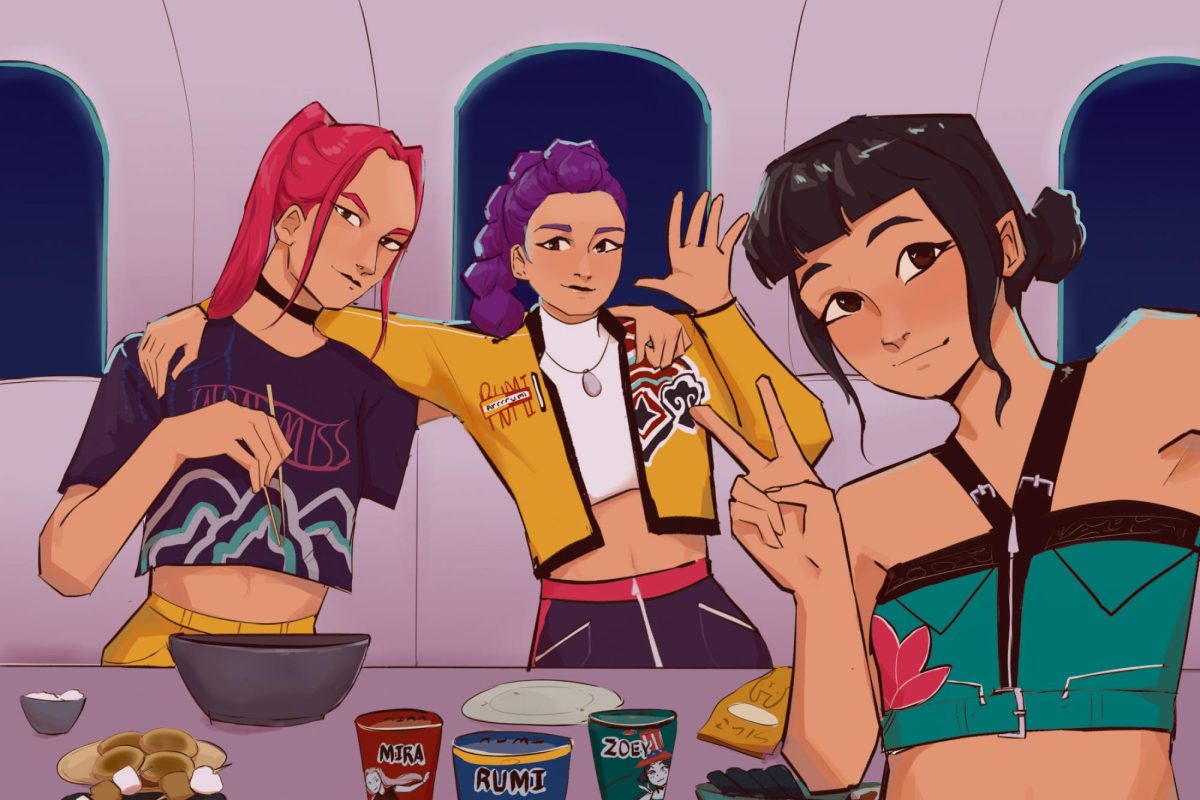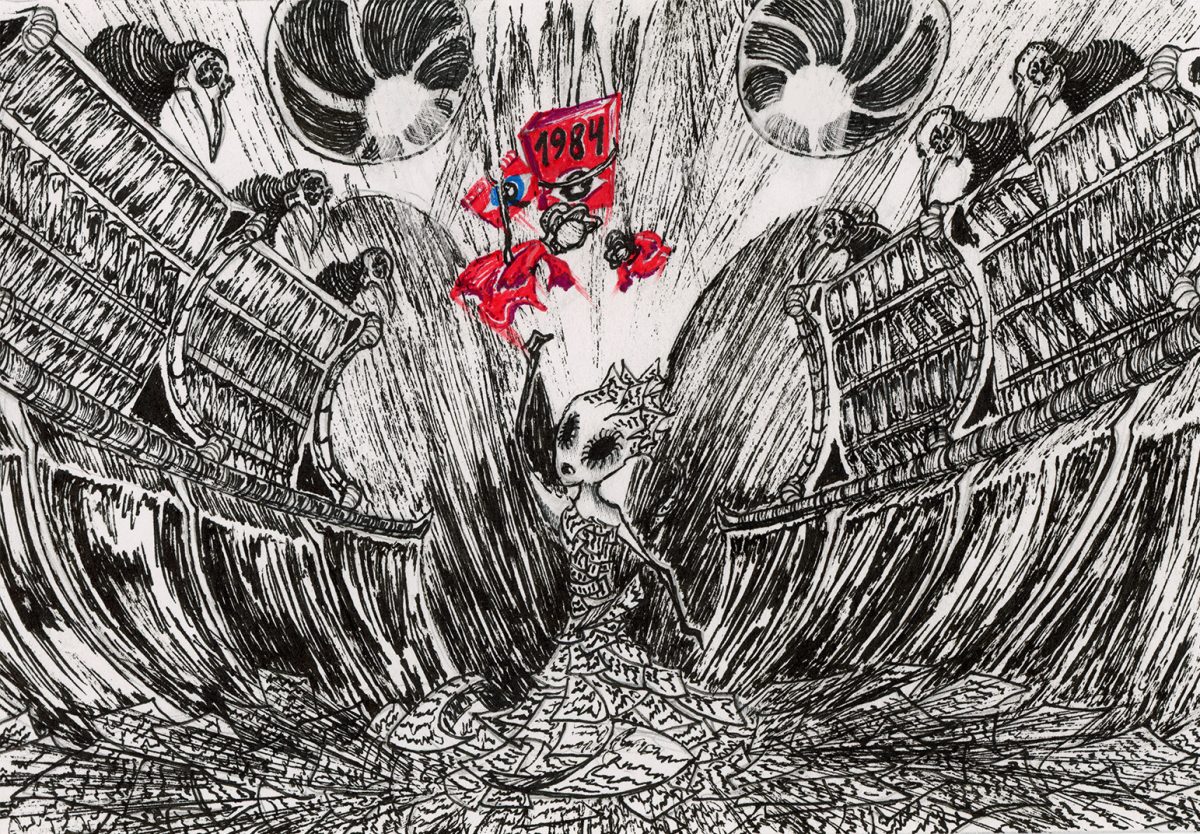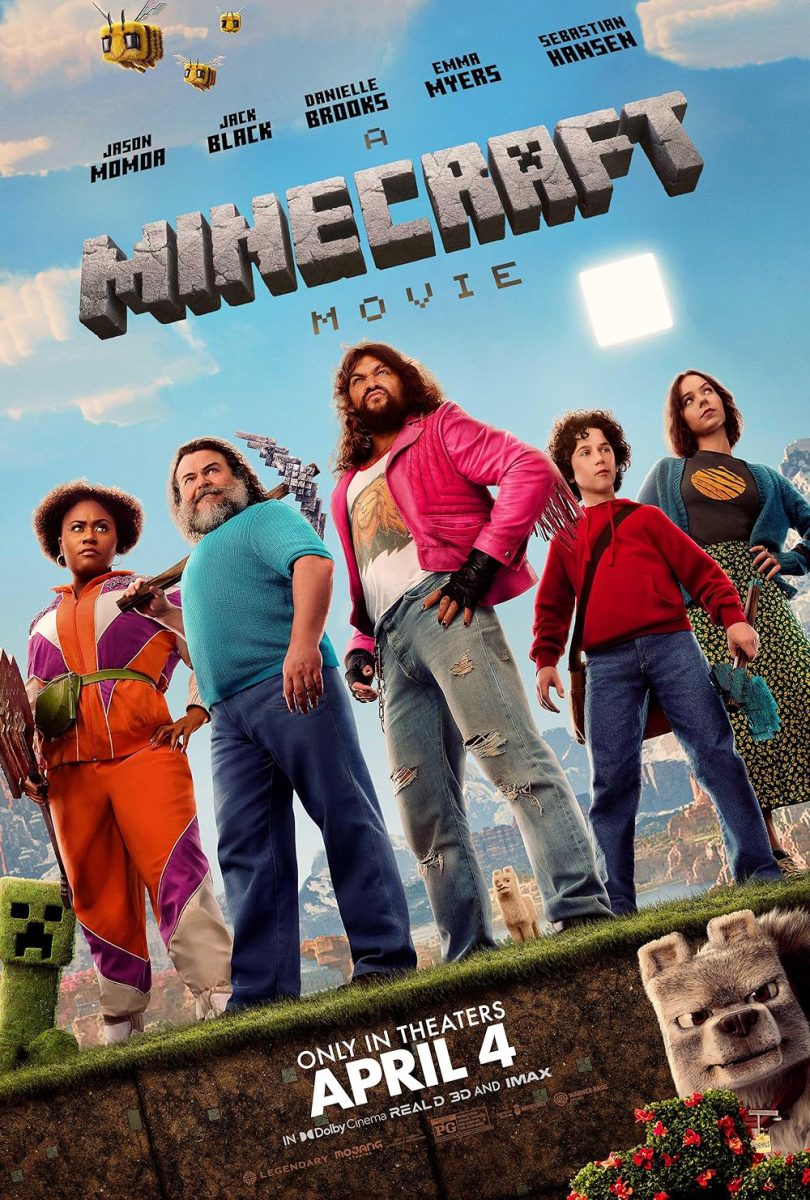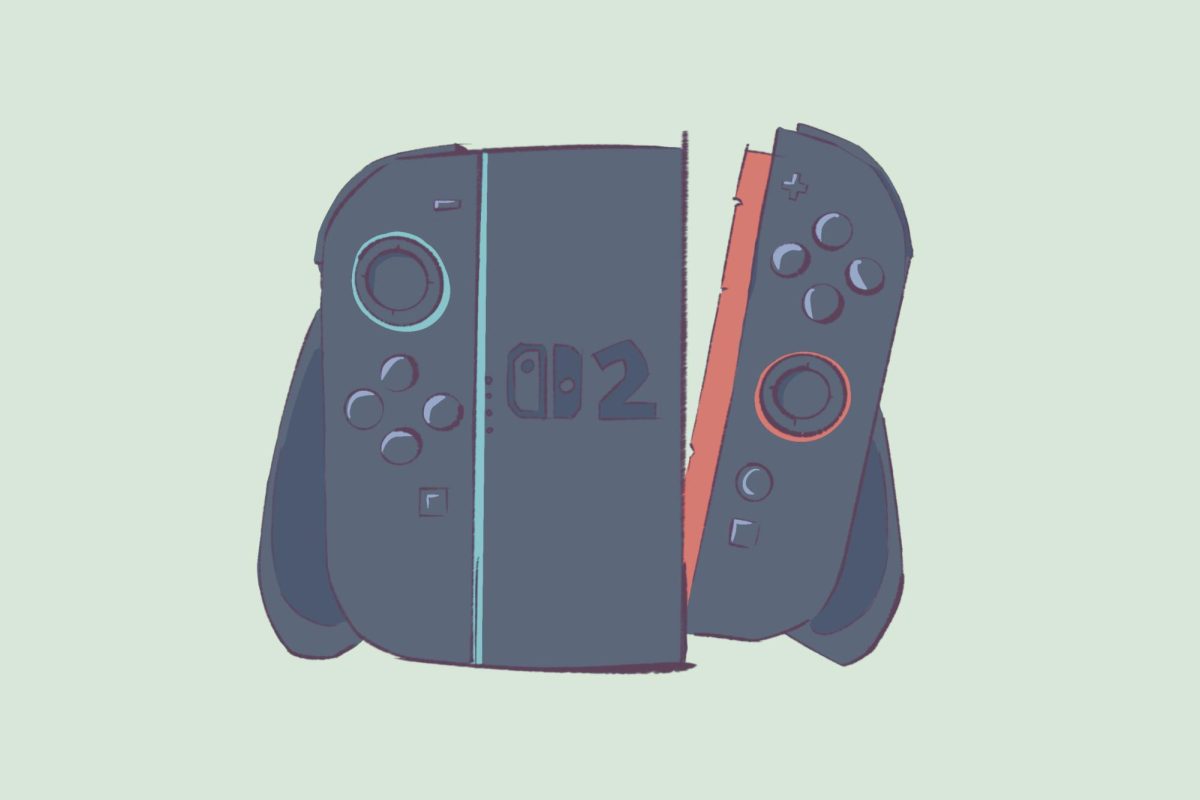Thought by many to have pioneered the animated film genre through breathtaking hand-drawn visuals and fantastical stories, Studio Ghibli is an immensely popular animation studio with devoted fans worldwide. Studio Ghibli Fest, presented by GKids, celebrates the studio’s work by bringing the magic of the studio’s films to theaters beyond its home country of Japan.
Beloved films such as “My Neighbor Totoro” and “Ponyo,” as well as the studio’s more underrated work, “Nausicaä of the Valley of the Wind” and “Whisper of the Heart,” are just a few of the films that will grace the big screen starting April 27 and run through Dec. 11. The fest will also include celebrations for the “Nausicaä of the Valley of the Wind” 40th anniversary, “Kiki’s Delivery Service” 35th anniversary, “Pom Poko” 30th anniversary and “Howl’s Moving Castle” 20th anniversary.
The Ghibli films, though often marketed toward children, are known to hide profound commentary on themes such as war and environmentalism in plain sight. Ghibli’s co-founder and acclaimed director Hayao Miyazaki has arguably some of the best examples of this within his work. A lover of aviation and an avid environmental and anti-war advocate, Miyazaki shapes his films into reflections of the things he is passionate about.
The art form that is filmmaking thrives in the hands of someone such as Miyazaki, who consistently broke through existing conventions and molded new ones during his nearly six decade-long career.
In the wake of Miyazaki’s latest masterpiece, “The Boy and the Heron,” recently winning Best Animated Feature at the Academy Awards, Studio Ghibli Fest kicks off its 2024 run with the director’s first Oscar-winning feature: “Spirited Away.”
“Spirited Away” Synopsis and Review
Setting off this year’s fest strong, the first film to hit the theaters is the playful “Spirited Away.” The iconic 2001 fantasy film, directed and written by Hayao Miyazaki, follows the unpredictable adventures of the earnest 10-year-old Chihiro Ogino who finds herself trapped in a magical spirit world that seems to never let Chihiro catch her breath.
The film is a mesmerizing masterpiece that seamlessly combines coming-of-age themes along with Japanese folklore and produces a visually stunning and emotional animated story.
After reluctantly following her parents into a mysterious tunnel and exploring the ruins of what seems to be an abandoned amusement park, things take a turn for the worse. Chihiro must find her way around this newly discovered and often frightening world as she makes efforts to save her family.
Making new friends along the way and navigating through a series of challenges, Chihiro’s character intensifies as she learns valuable lessons about courage, resilience and empathy.
The animation is a sight to behold and showcases Studio Ghibli’s highly praised attention to detail and distinguishing art styles. The realistic portrayal of emotions and fantastical elements play a significant role in the studio’s films, and especially in “Spirited Away.” The depiction of raw emotions such as turmoil, desperation and sorrow are realistic in the film and expresses a beauty that is to be seen in such emotional moments.
Characters such as Chihiro, Haku, Yubaba and many others are so expressional – nuances in each of the character’s mannerisms and expressions are made with obvious intention that connects to the story’s storyline as it develops.
Adding to this, the bright and richly animated settings in this animation are stunning – from the crowded bathouse to serene landscapes, each setting discovered is meticulously animated and adds another layer of depth to the vibrant world and what it holds. This overall attention to detail allows for audiences to follow alongside the wide range of perspectives and developments for each character as well as immerse oneself in the vivid spirit world. – JS
“Spirited Away” Background: Miyazaki’s Creative Process
Though Miyazaki is known for creating unique and fantastical worlds, many believe “Spirited Away,” to be the best product of his imagination yet. The most common praise of Miyazaki’s films is that he makes even the ordinary seem magical – and perhaps this is because much of it is actually based on the ordinary.
According to Miyazaki, all of the strange yet beloved characters of “Spirited Away,” are inspired by real-life experiences or people. Chihiro, for instance, is based on the real 10-year-old daughter of one of Miyazaki’s friends. He chose this girl as inspiration for his protagonist because he thought she was lazy and loudmouthed, which he believed represented 10-year-olds best.
Funnily enough, the iconic character No-Face is said to be autobiographical. Toshio Suzuki, producer of “Spirited Away,” said: “In my experience, many of the characters portray and contain positive elements of the man, Miyazaki-san. No-Face is desperate to enter somehow into the hearts of others, but really doesn’t have the ways or means to do so.”
Even the Stink Spirit, a massive creature made of sludge, is based off of one of Miyazaki’s childhood experiences. In the film, Chihiro and the other bathhouse workers tie a rope around what seems to be a thorn in the side of the creature, only to pull out a continuous line of trash, including an entire bicycle.
“I cleaned a river once, and there really was a bicycle,” Miyazaki said. “It was stuck in there. Ten of us wrapped a rope around the bars and slowly pulled it out. We really cleaned up the river, and the fish were back. That’s why I added that scene.”
Along with these real-life connections, it is also Miyazaki’s meticulous attention to detail that truly cements the realism of his films. Glen Keane, supervising animator at Disney, witnessed this firsthand when working with Miyazaki. Keane said: “The scene where Chihiro puts her feet into her shoes would just be a very simple scene. You might just animate it and she puts her shoes on and moves, runs off. But he’s observed how a real little girl does it – she doesn’t just put her feet in her shoes, she makes sure it’s snug and tight. In this scene you can see her tap her toes into there and she goes running off. And it’s these little magic moments that convince you that this isn’t an imaginary world – this is real.”
Kirk Wise, the director of the English translation for “Spirited Away,” found Miyazaki’s creative process quite unconventional. According to Wise, the process began with a flurry of ideas, translated into storyboards that Miyazaki created himself, all by hand. He would even write song lyrics to represent what he envisioned. Wise said, “Even he isn’t sure exactly where it’s going to go when he starts.” It is that much more wonderful, then, that the results are always so stunning and memorable. – AP


